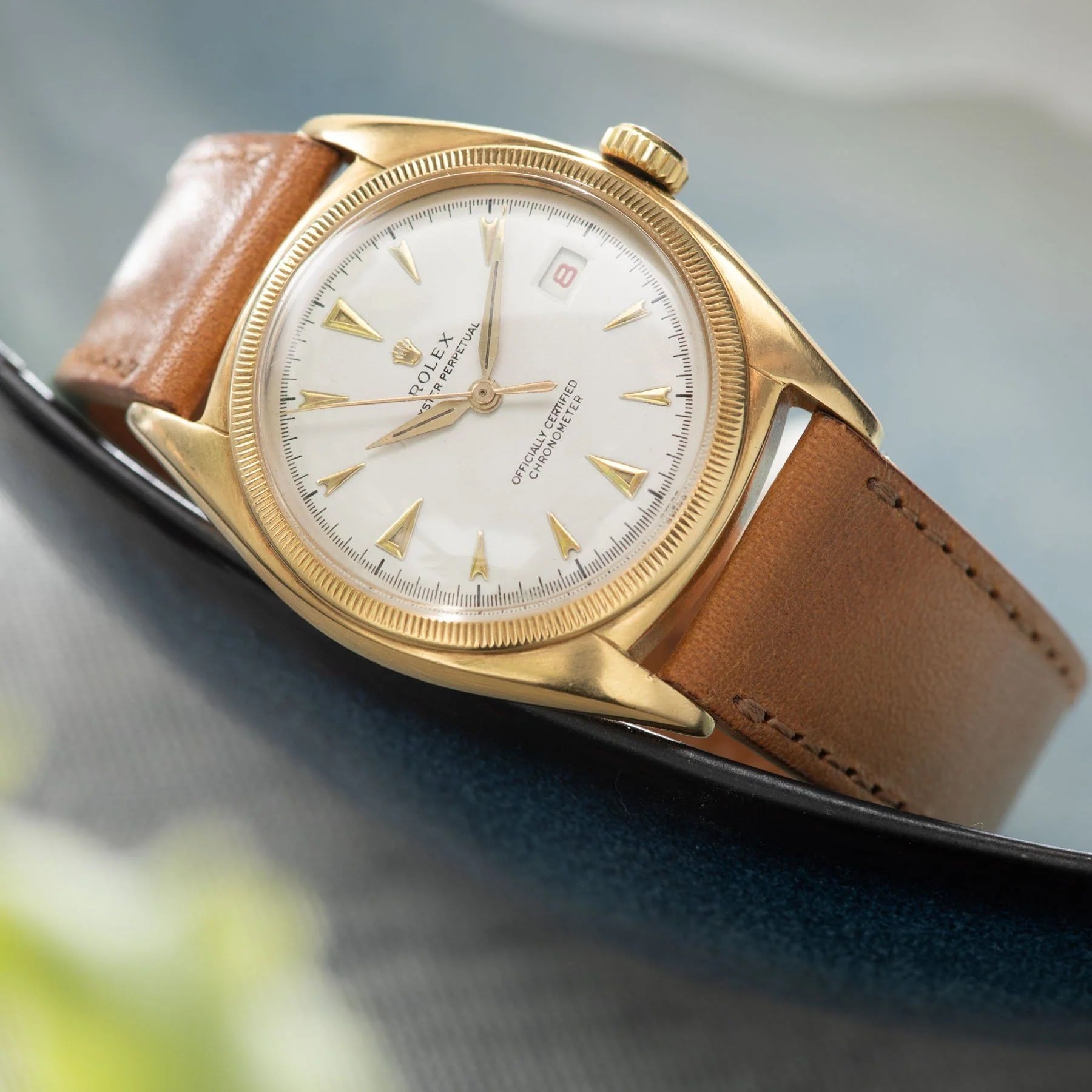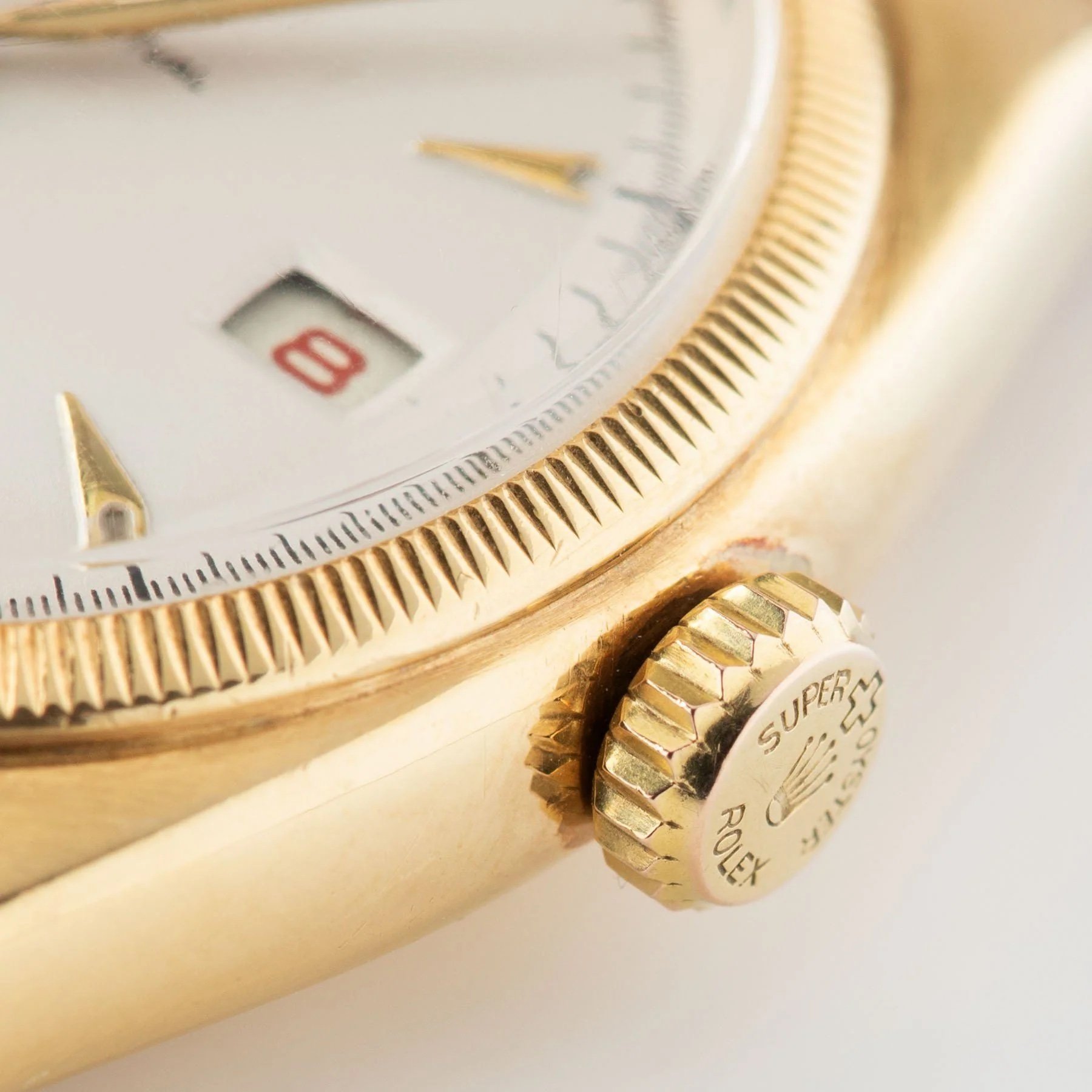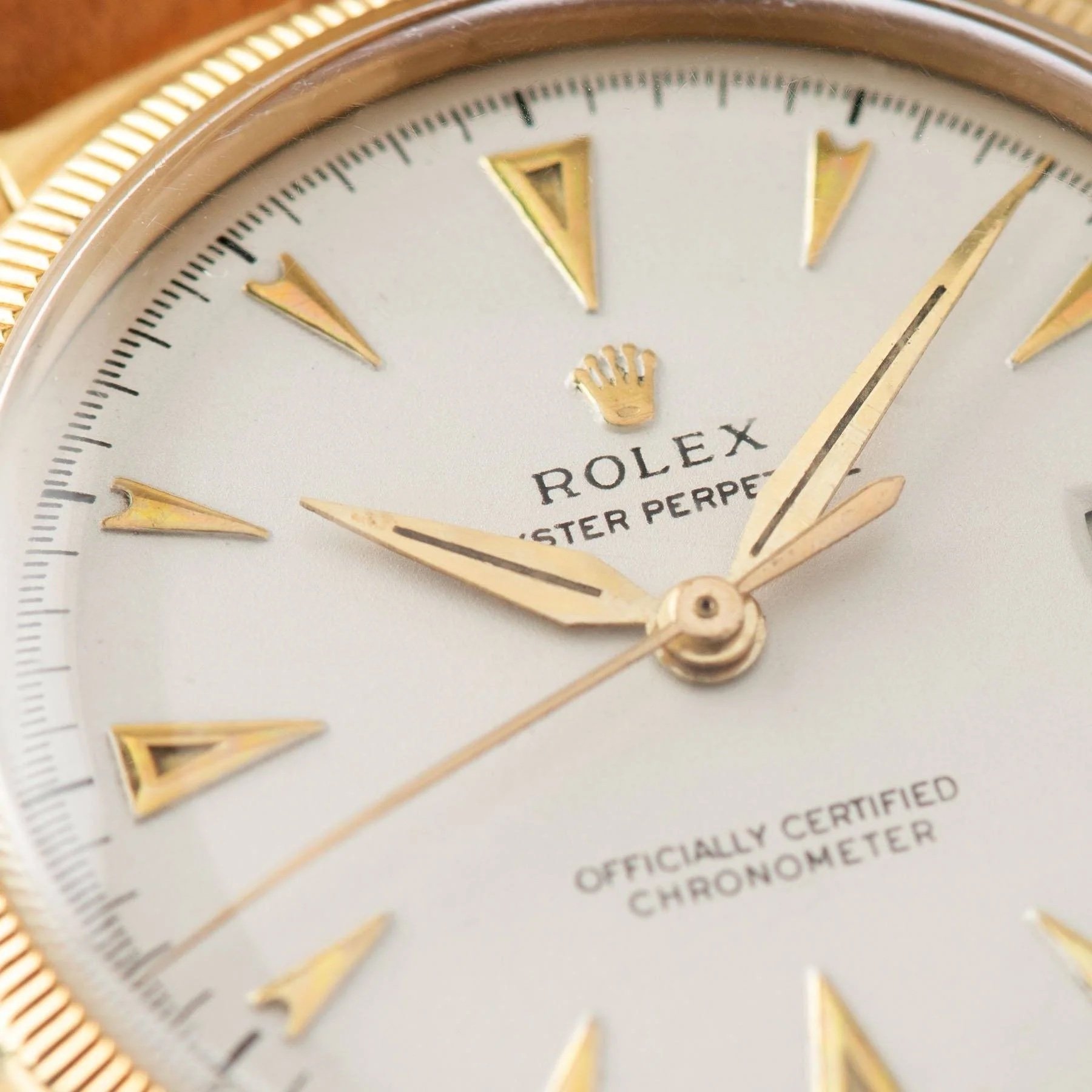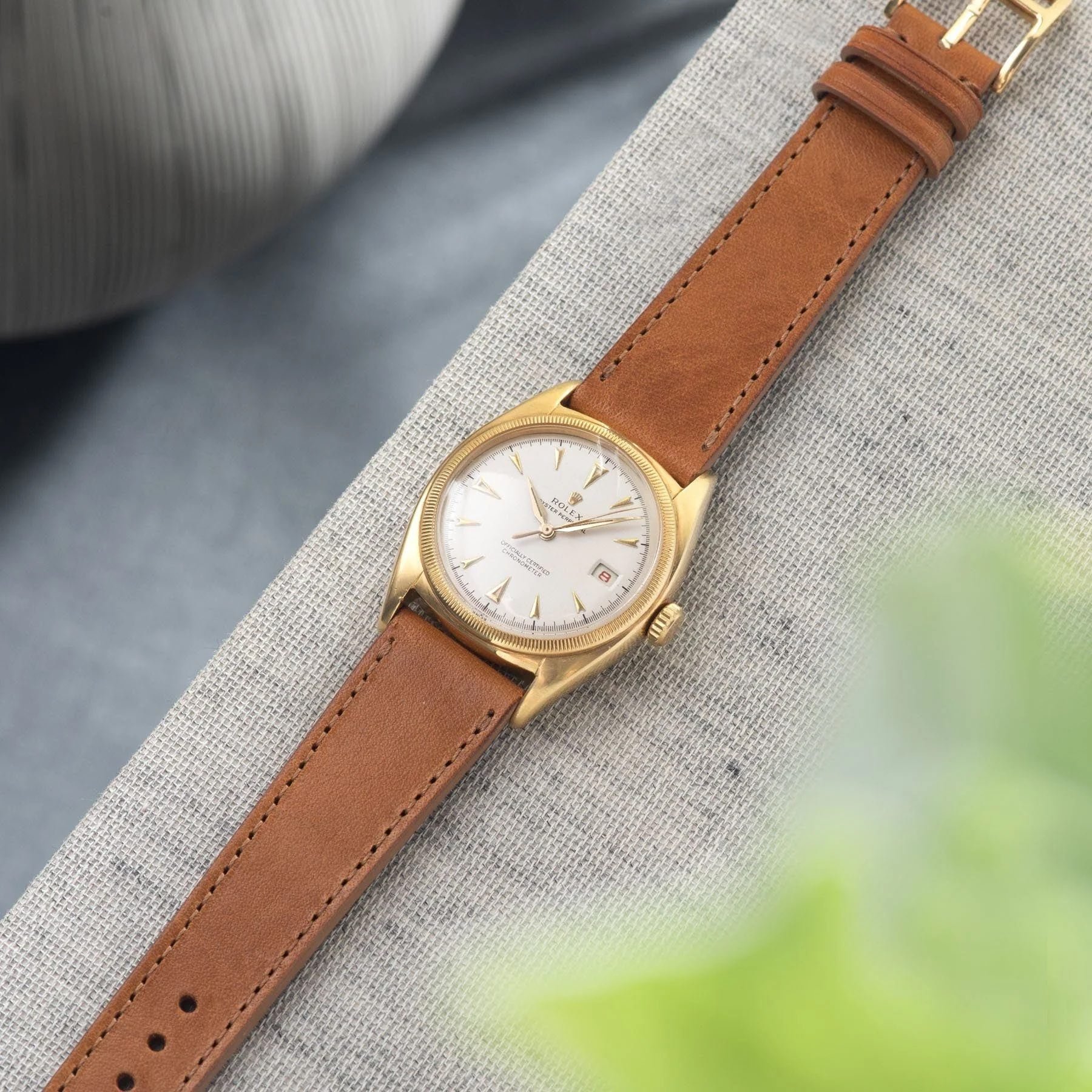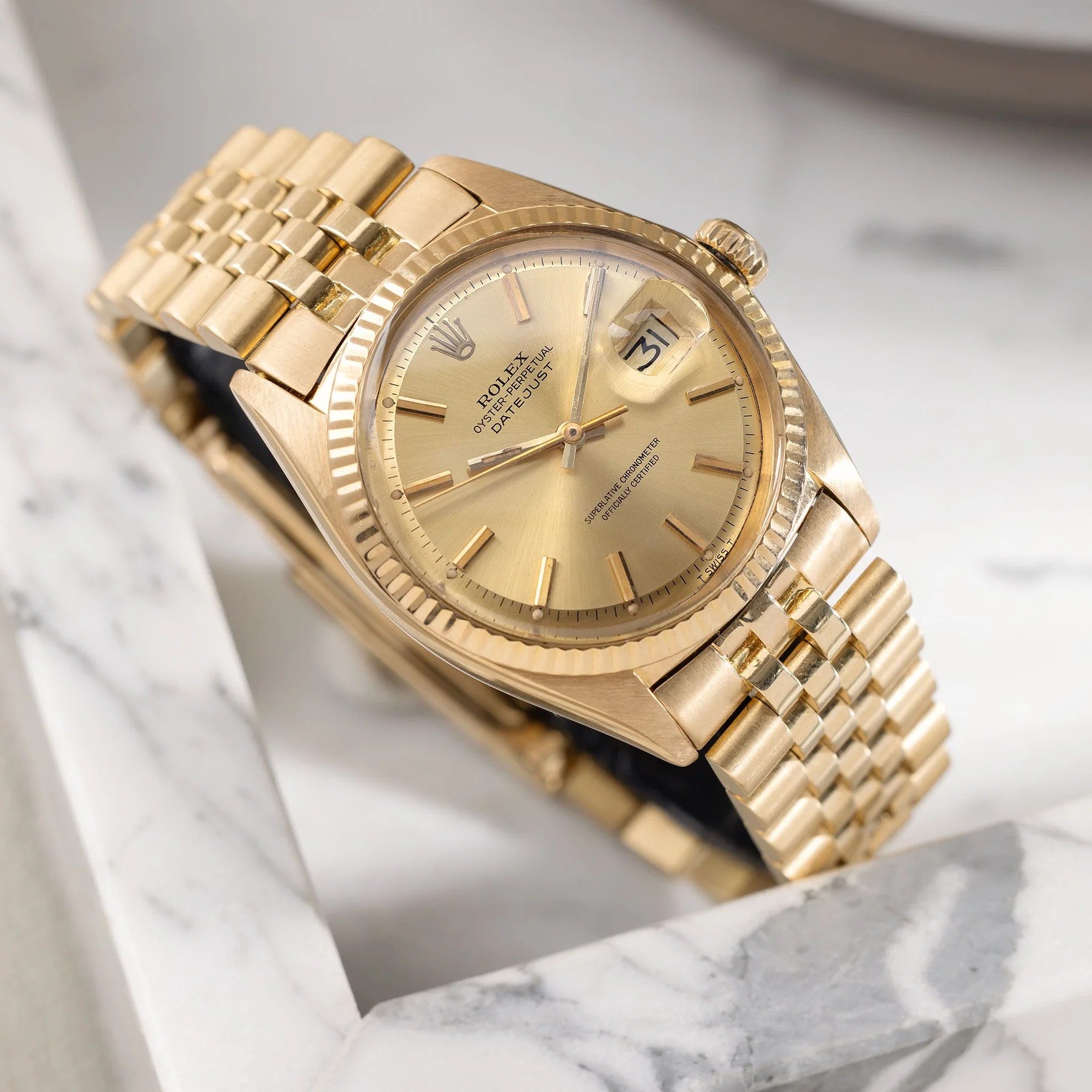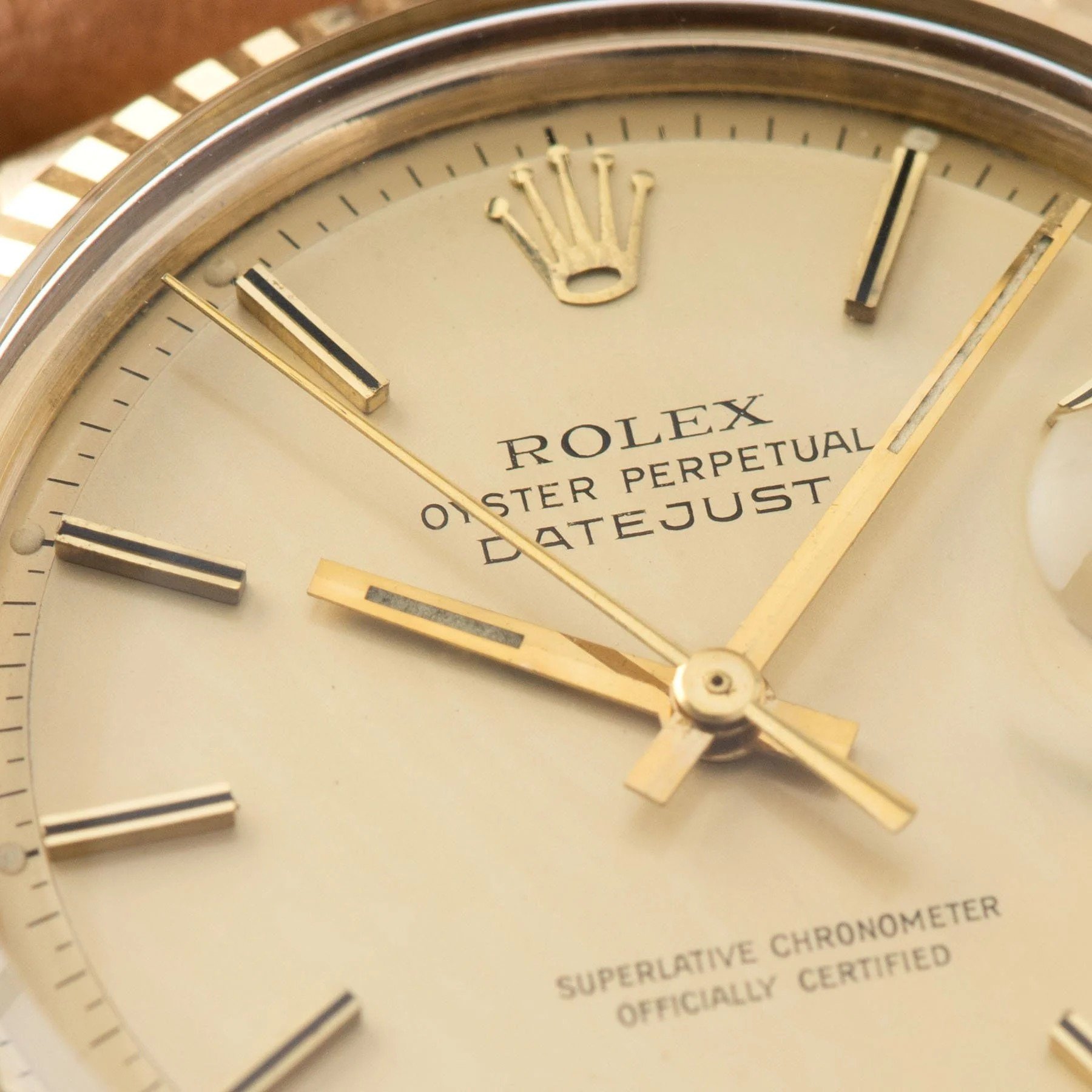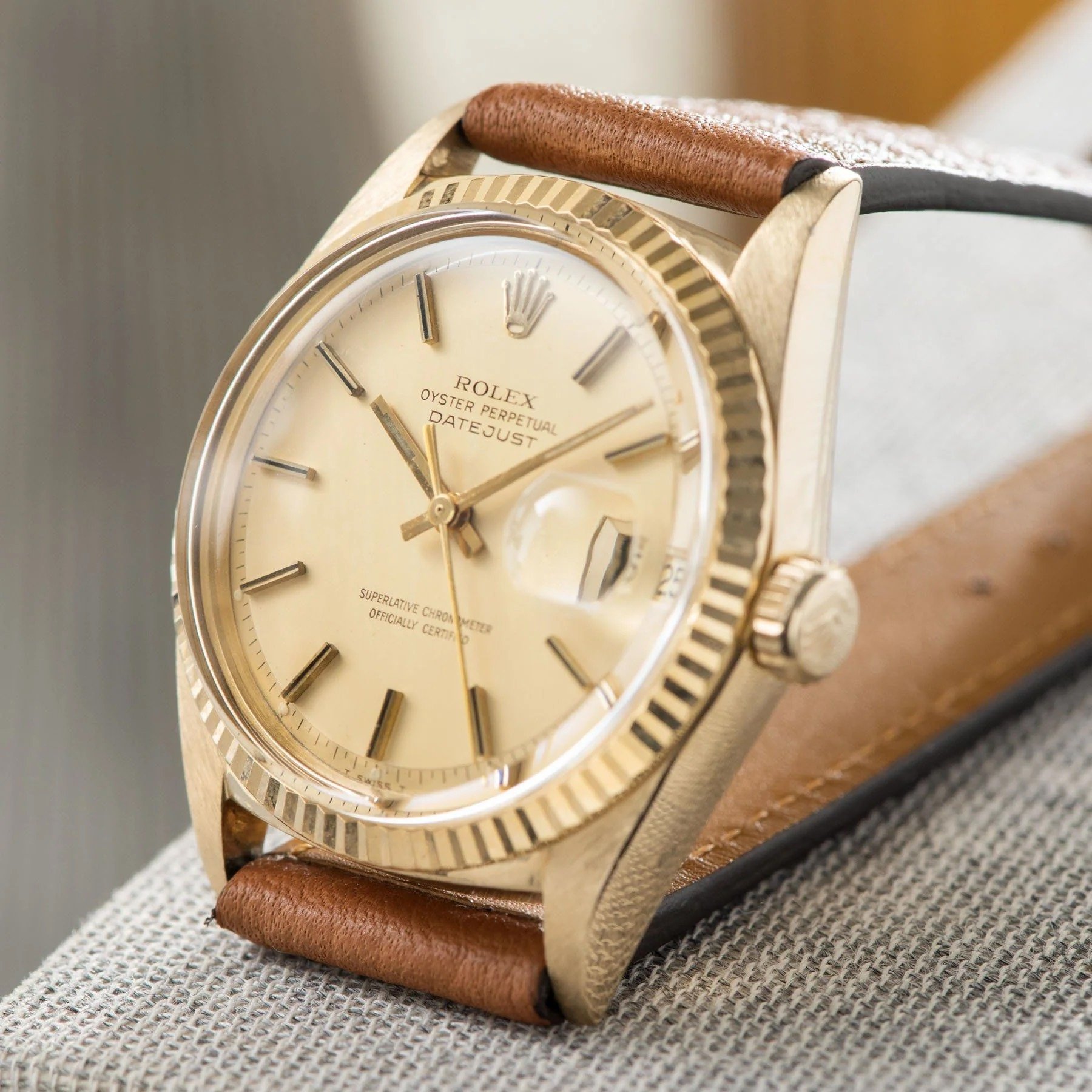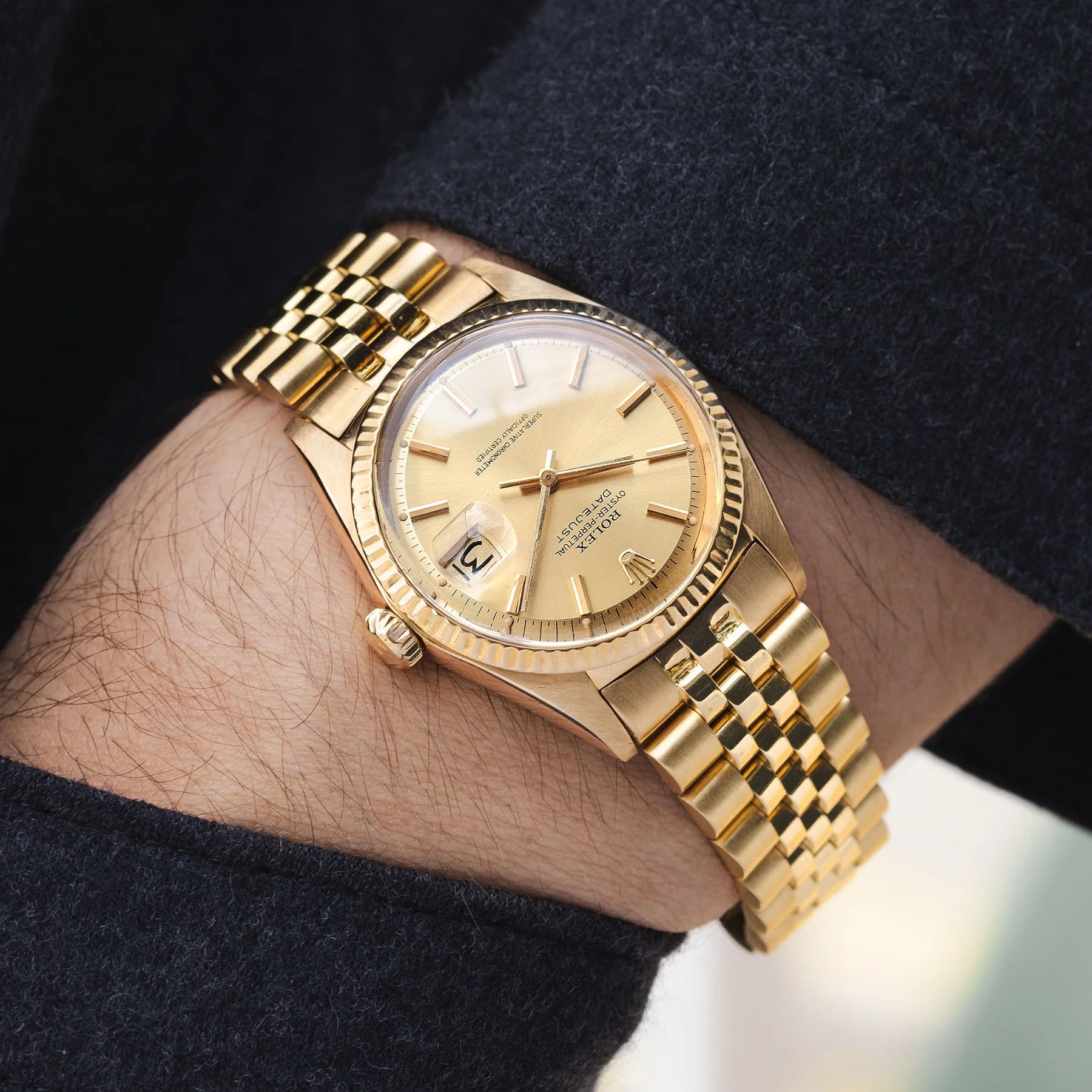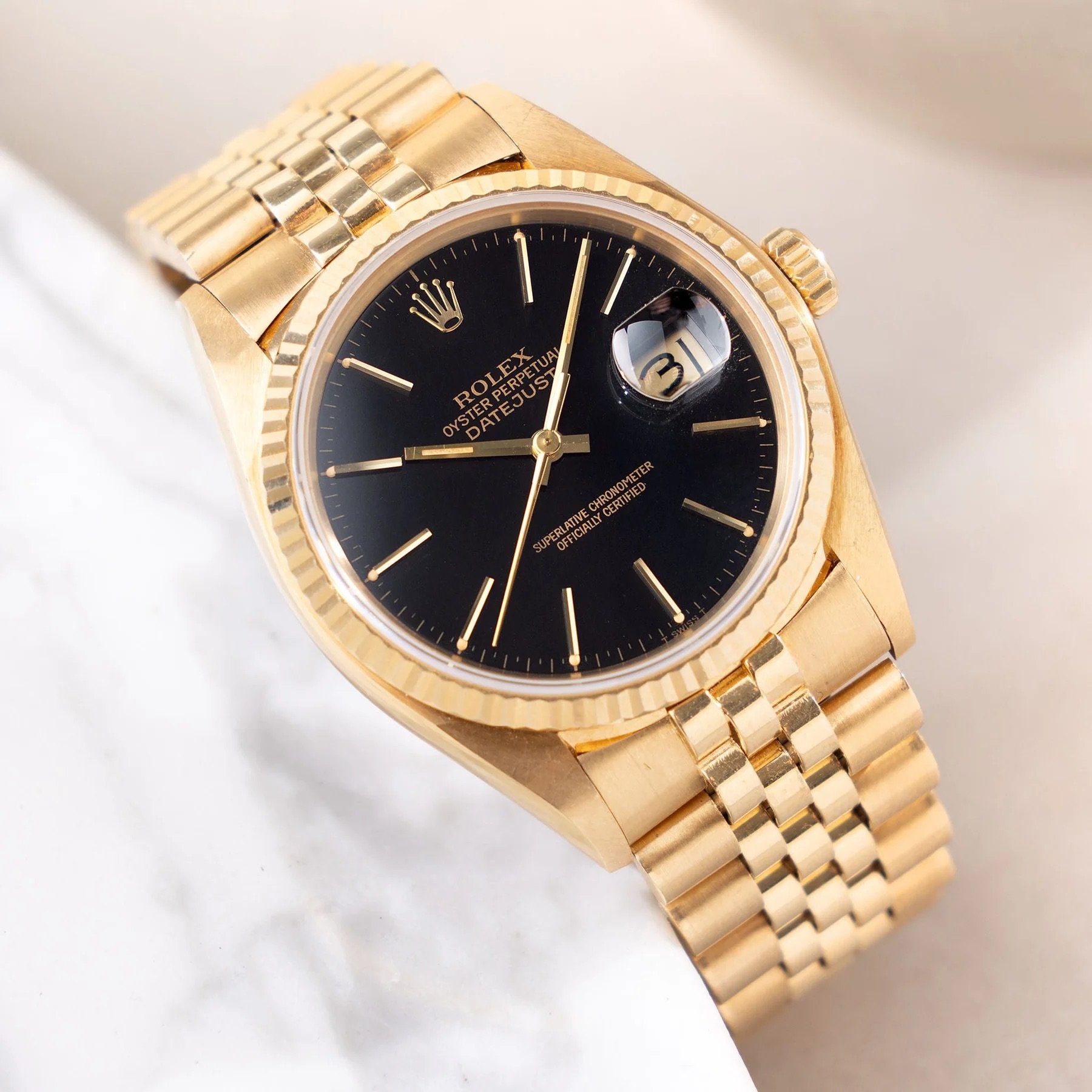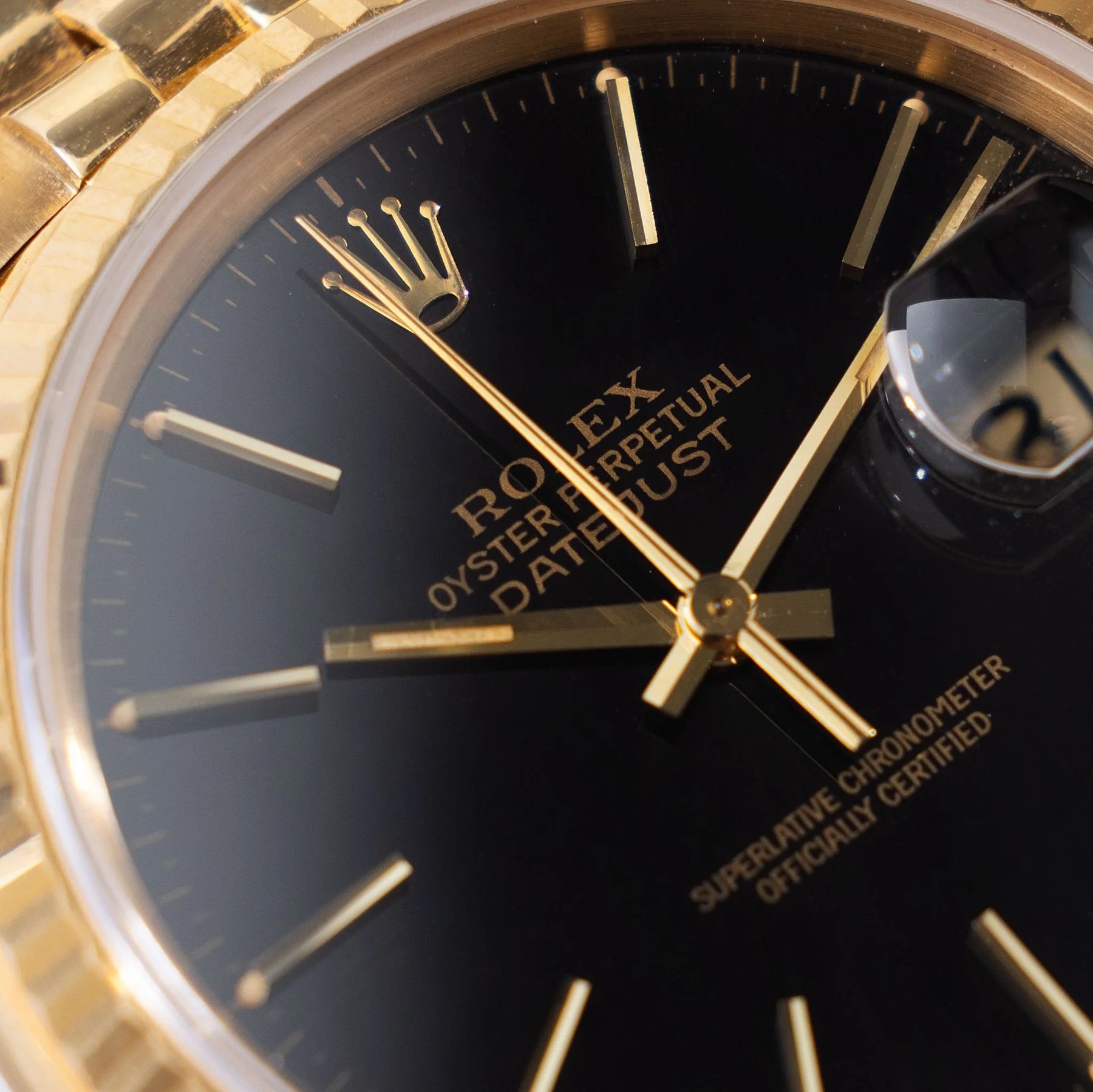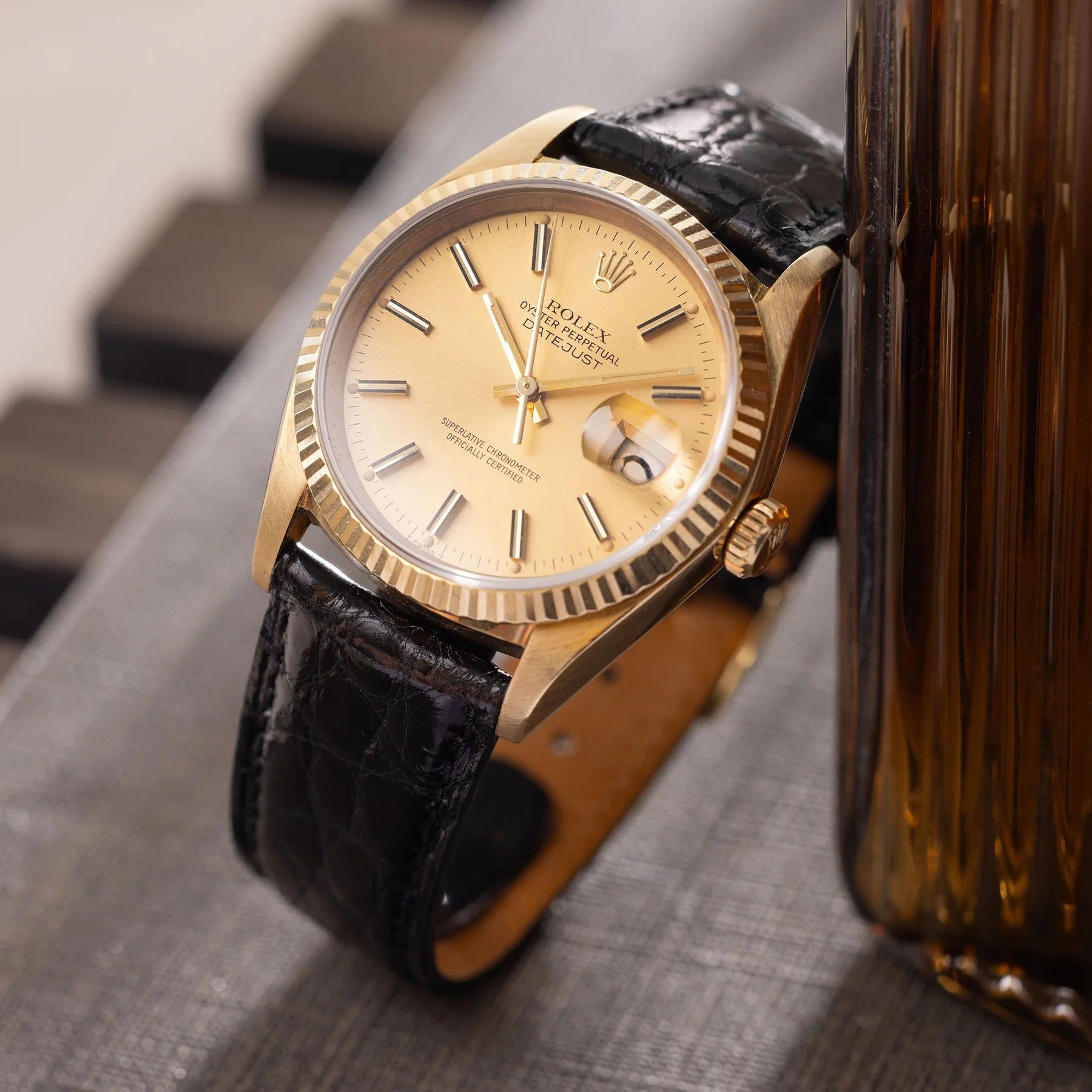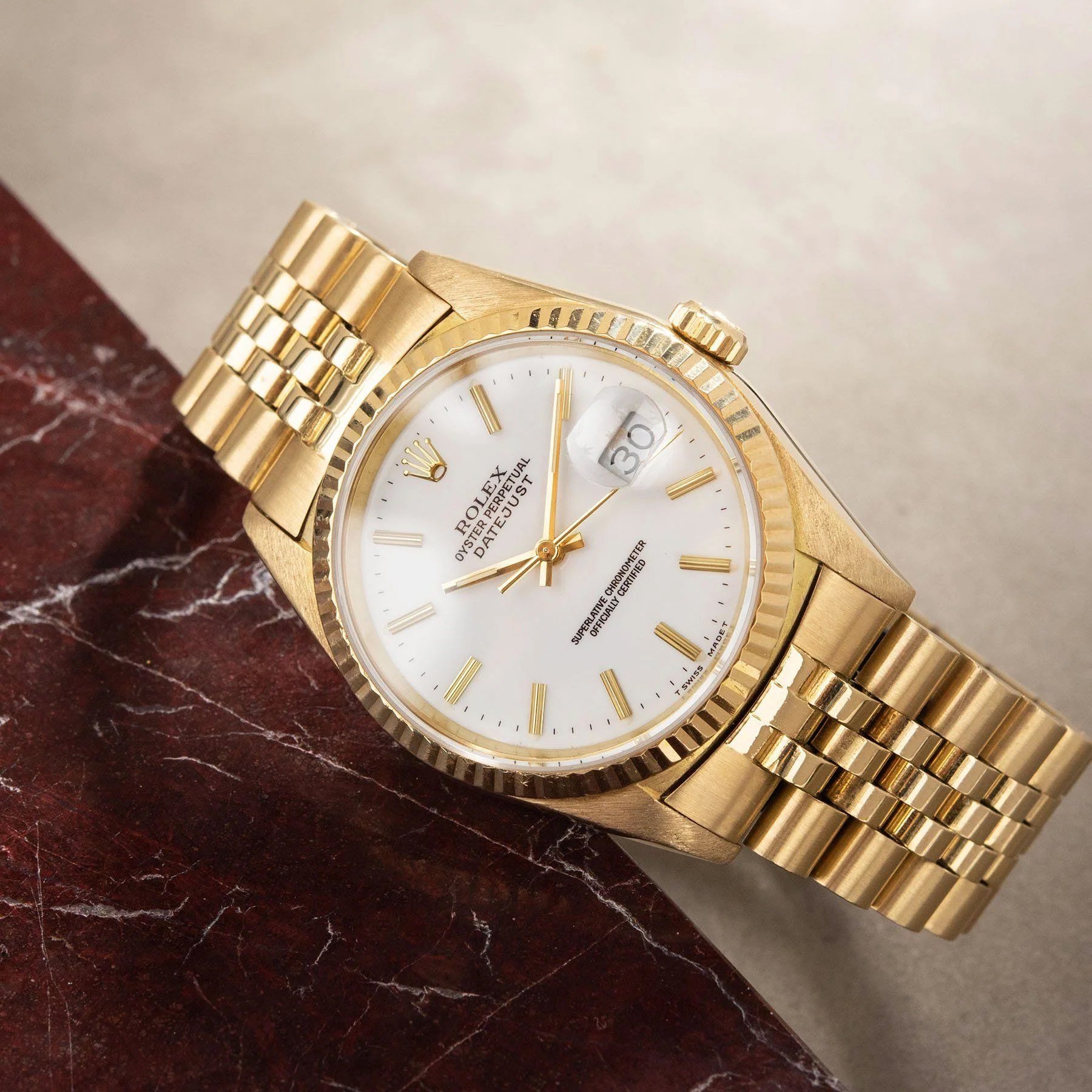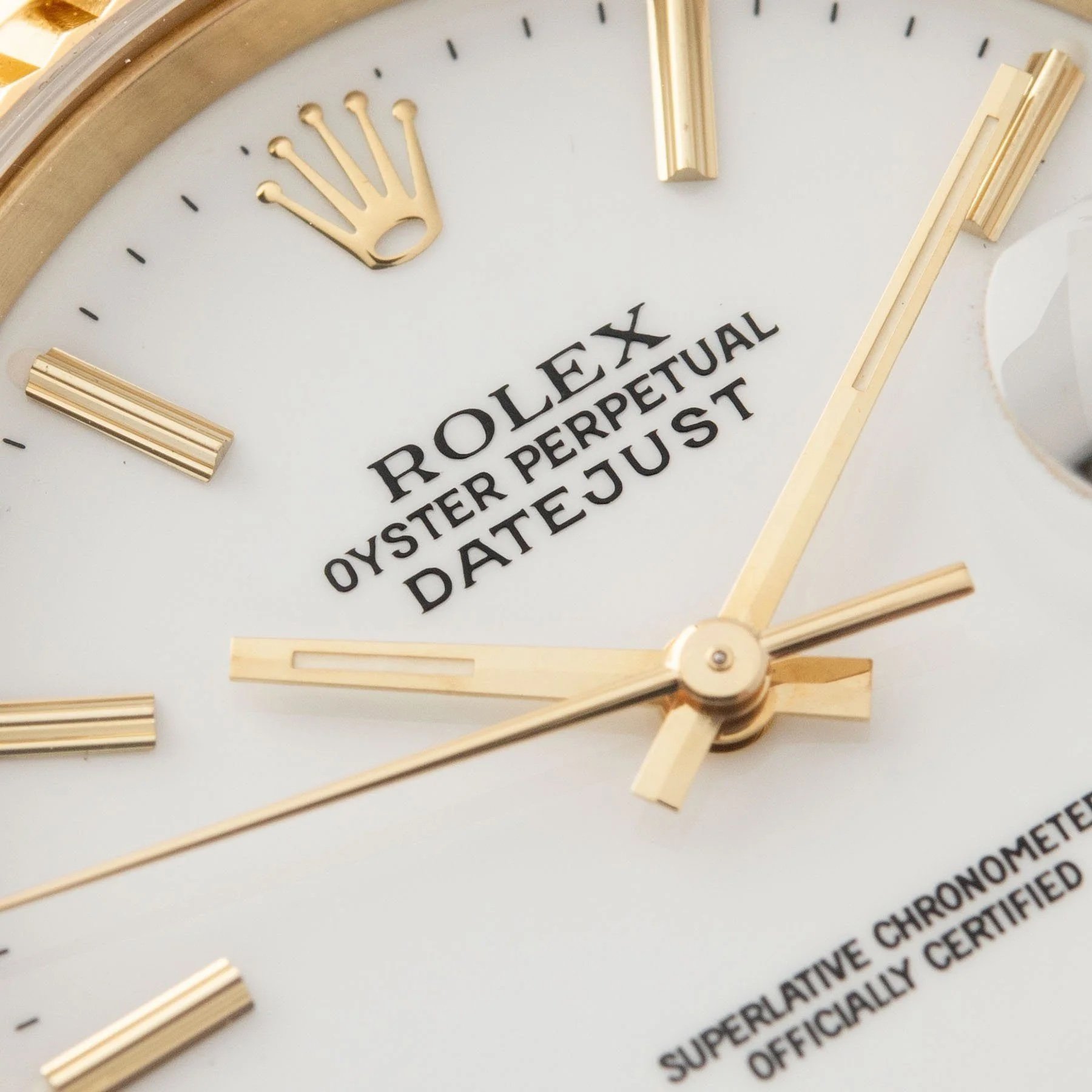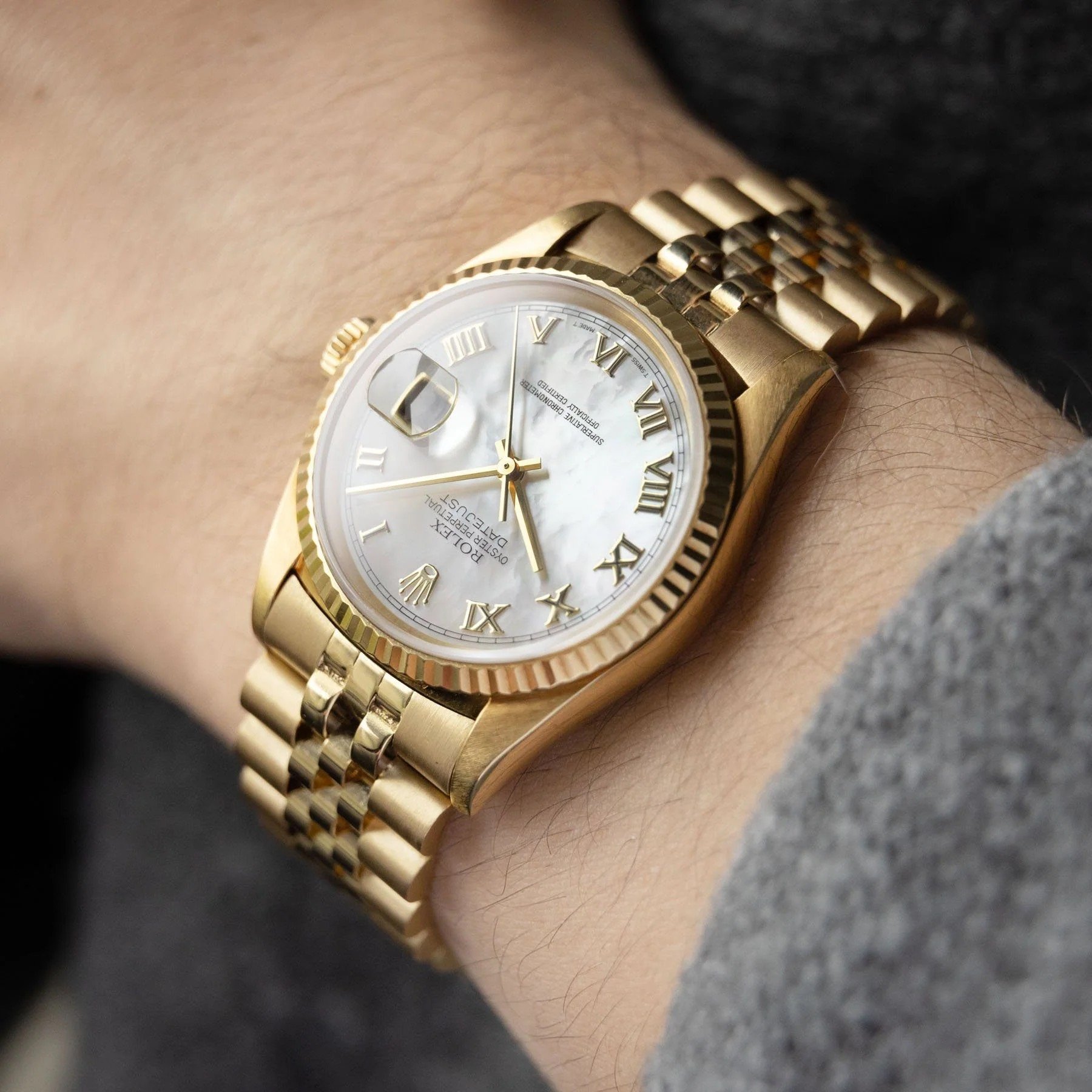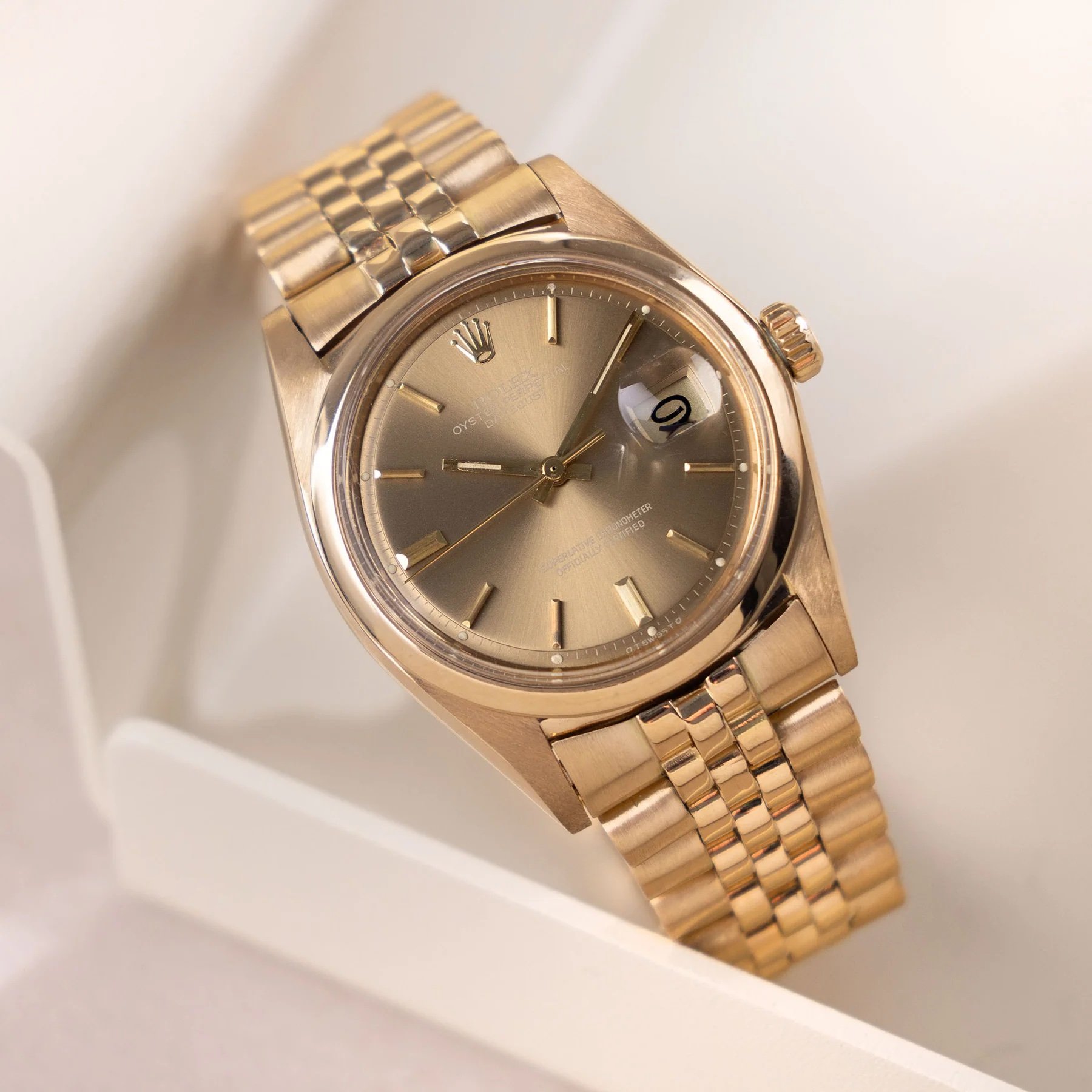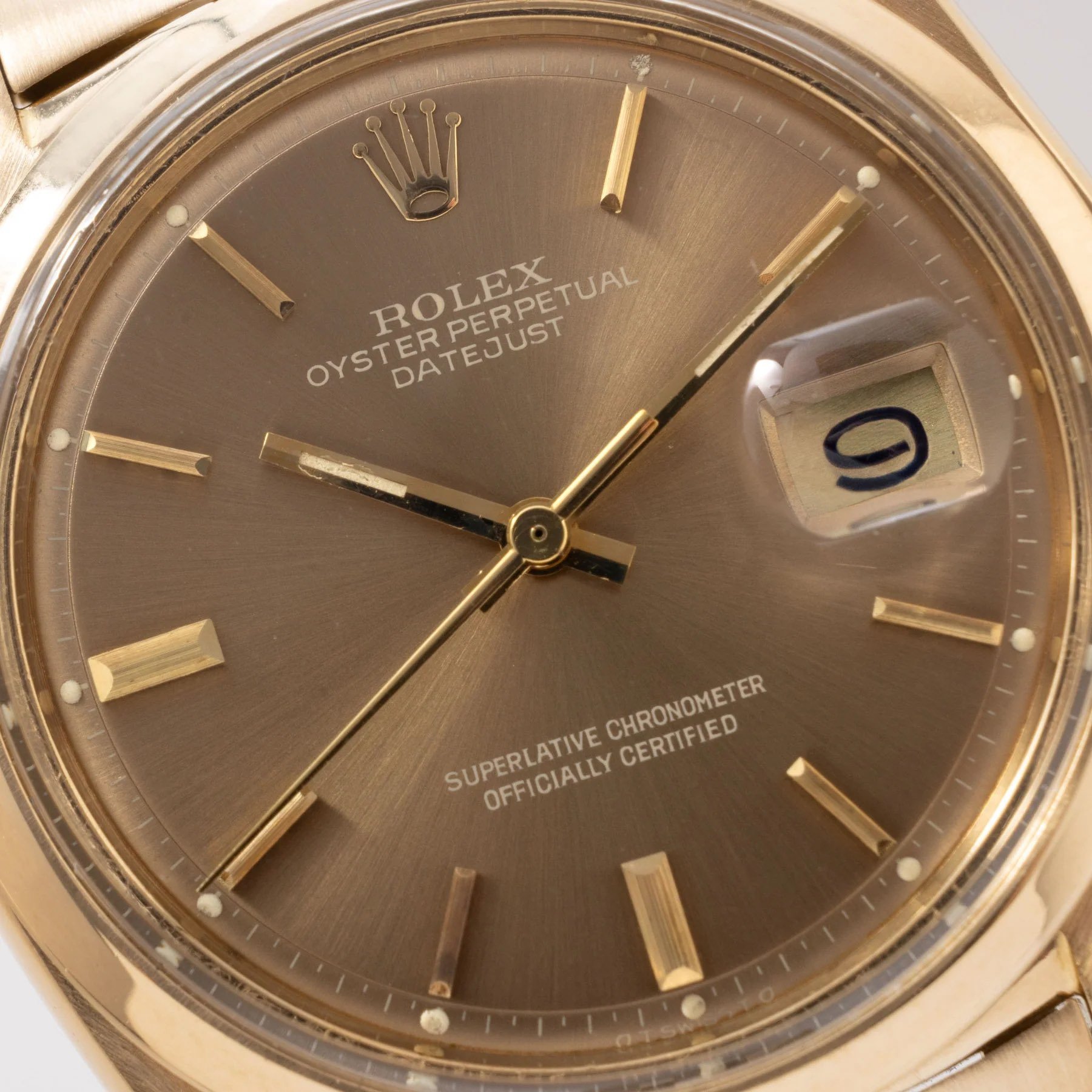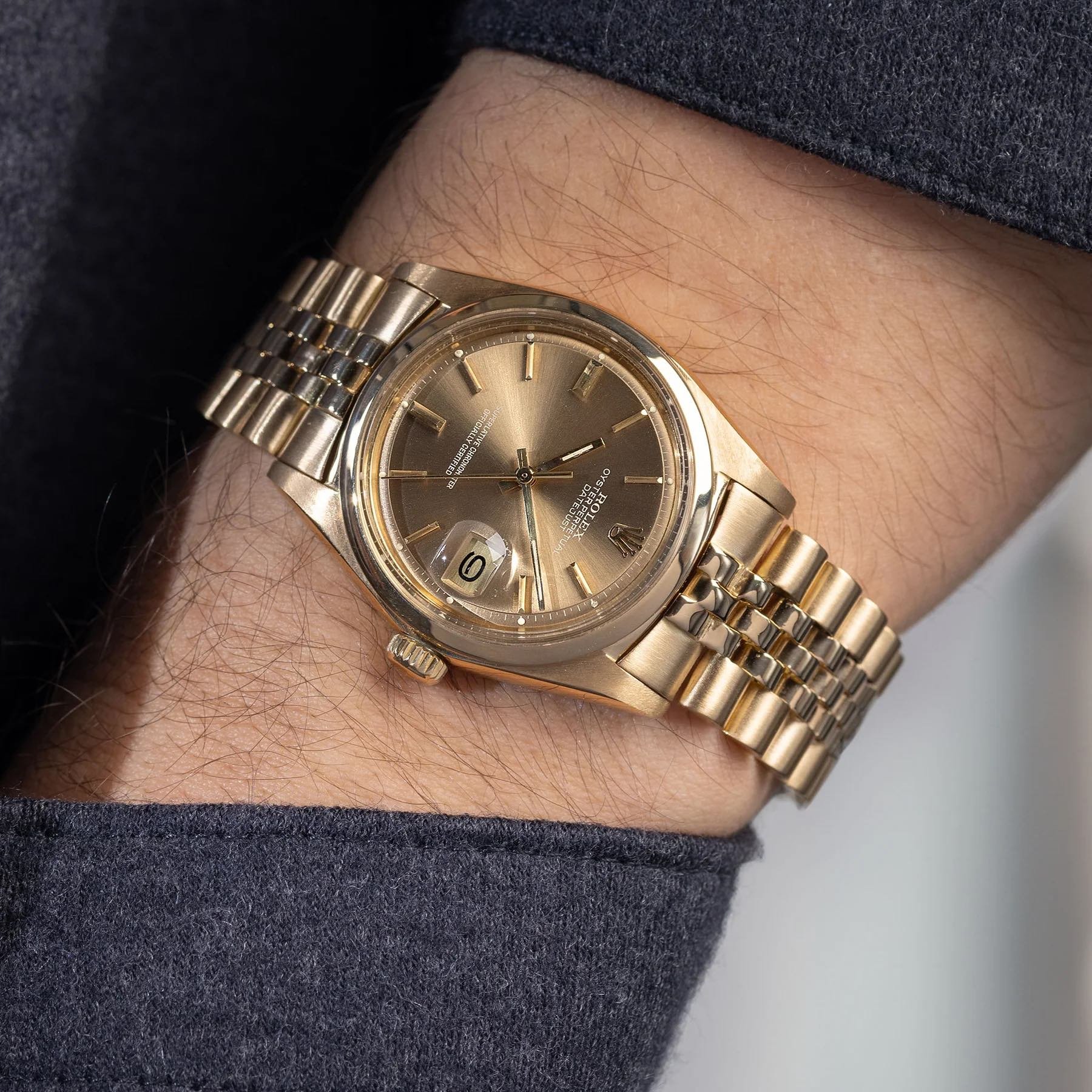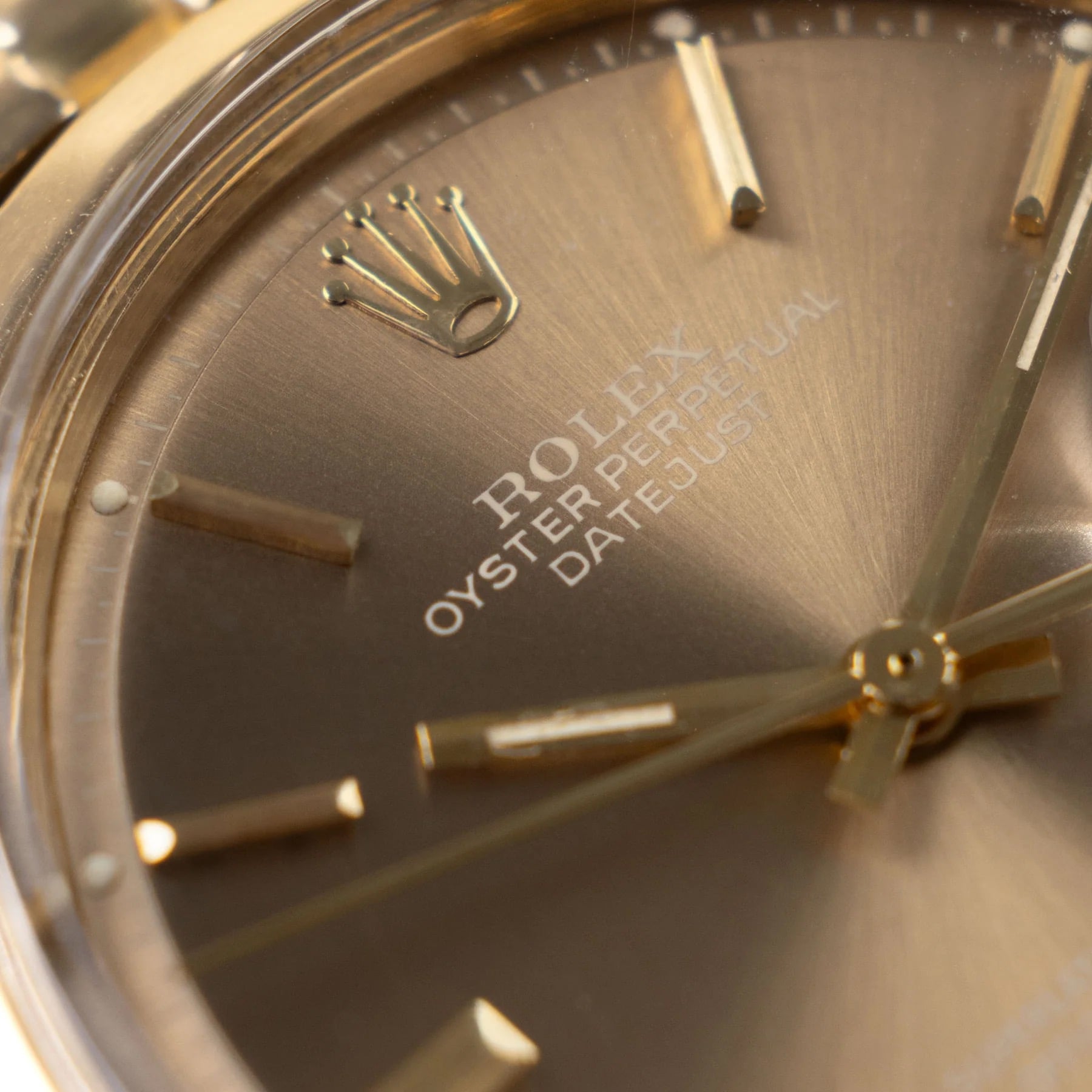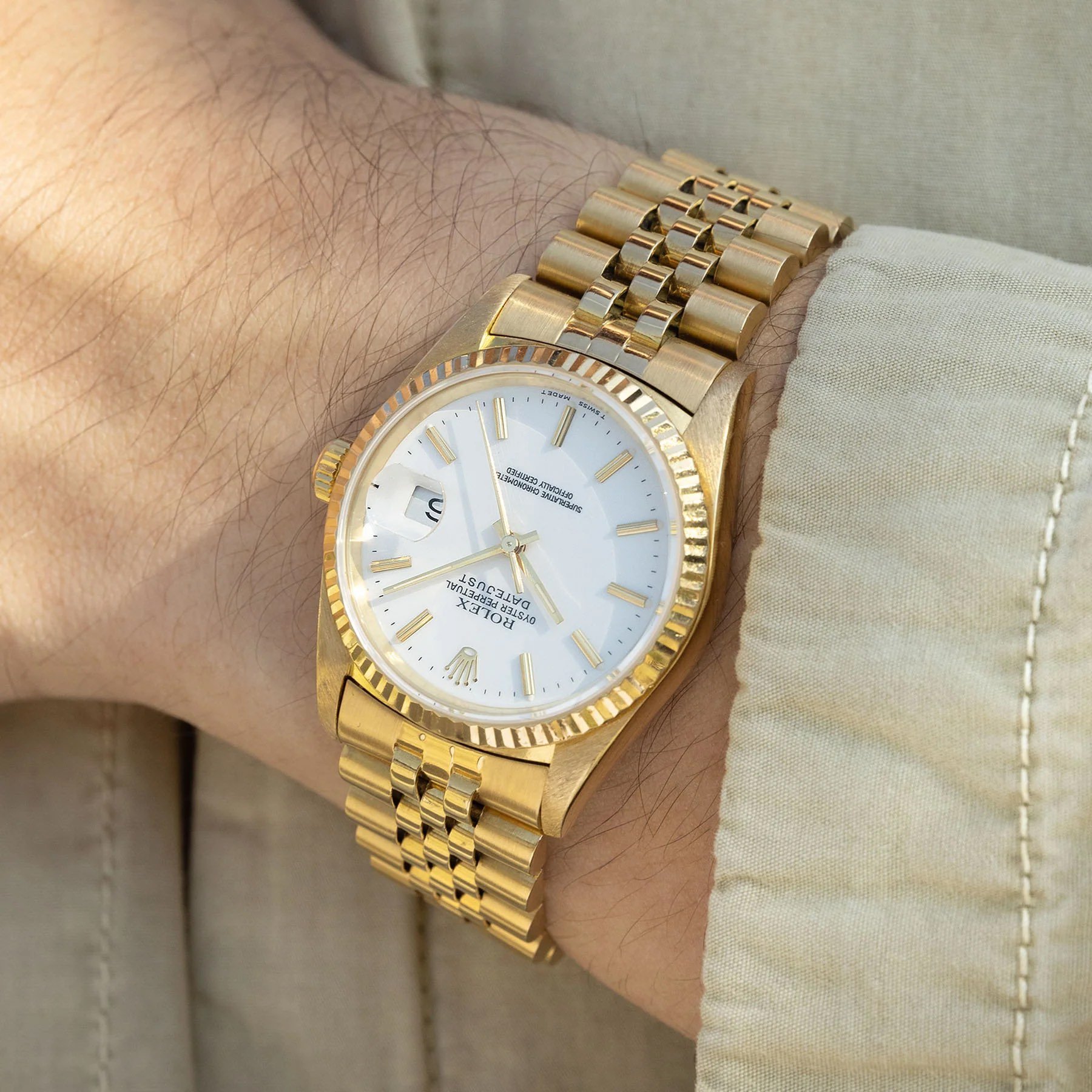Fratello’s Top 5 Pre-Owned Full-Gold Rolex Datejust Models — The Hidden Gems Among Gold Rolexes
Another Friday, another Top 5! This week, we continue our trip through the universe of pre-owned gold Rolex watches. After last week’s list that highlighted some amazing gold Rolex sports watches, it’s time to focus on the Datejust. If you ask most watch fans about their favorite Datejusts, their answers will be either a stainless steel or two-tone reference. But have you ever thought about a Datejust in full yellow gold? The gold Datejust might not be part of the current Rolex collection, but that’s why a deep dive into the past models is even more interesting. We have found five yellow gold Datejust references from the past that show the brilliance of this model. Let’s jump in.
Last week’s article on full-gold Rolex sports watches showed that the Genevan brand has produced gold tool watches for decades. They are at home in the brand’s collection because of their historical relevance and visual brilliance. The same can be said of full-gold Rolex Datejust models. Before there was a Day-Date, the Datejust was the brand’s flagship model. As such, it was only available in precious metals in the early stages of production. So, once again, there is a historical relevance to these watches. Currently, the Datejust is not available in full gold. You can get it in stainless steel or different Rolesor versions. But The Crown created some stunning gold versions in the past, and we want to highlight the best pre-owned gold Datejust references this week.
Rolex Datejust ref. 6105
Let’s kick this list off with a proper vintage example. The Rolex Datejust ref. 6105 was produced from 1950 to 1953. This famous Datejust reference perfectly embodies the vintage Datejust vibes of the first generations. The watch has a 36mm yellow gold case with a finely fluted bezel.
If you prefer a smooth bezel, ref. 6104 is the one you want. It looks slightly sportier than the 6105, but it’s also a lot rarer and, therefore, more expensive. You could also choose a rose gold ref. 6105 if you prefer that tone, but those are also rarer than the yellow gold versions.
Inside the case, you will find the caliber A296. This 18-jewel self-winding movement operates at 18,000vph and has 18 jewels and a 38-hour power reserve. Rolex produced several dial variants, including white, black, silver with diamonds, and gold with diamonds. On top of that, the text on the dials also varied quite a bit. Other standout elements are the Alpha hands and the arrow-shaped indices. These offer the proper vintage Rolex style.
While you can get the Datejust 6105 on a bracelet, you will pay a huge premium. On top of that, the quality of 1950s bracelets is not up to today’s standards, so wearing the watch on a period-correct bracelet is a risky undertaking. If you get it on a nice leather strap, though, you’ll have one of the classiest vintage Rolexes ever made. Expect current prices to start at roughly €9K and move up to €25K for the watch on a bracelet.
Rolex Datejust ref. 1601/8
Let’s move on to another classic Datejust reference that is widely loved by Rolex fans. The Datejust ref. 1601 is one of the line’s most iconic references. Fratello’s own Thomas wrote a great in-depth article about his stainless steel ref. 1601 with a silver dial, fluted bezel, and a Jubilee bracelet. It’s the archetypical Datejust, and I would be chasing it.
But what about that same classic reference in gold with a gold dial? The ref. 1601/8 turns up the “wow” factor up to 11. The iconic 36mm case design, the fluted bezel, the boxed-shaped Plexiglass crystal, and the pie-pan dial combine to create an absolute beauty of a watch in yellow gold.
The Datejust 1601 was introduced in 1959 and stayed in production until 1977. During that production run, Rolex used several movements for it. The first was caliber 1565, which operated at 18,000vph and had a 42-hour power reserve. In 1965, Rolex updated it to caliber 1575, which had a higher 19,800vph beat rate. Then, in 1972, Rolex updated the movement again with a hacking function but without changing the caliber reference.
The ref. 1601 started with Alpha hands but saw a switch to baton hands, which the brand still uses today. There are several great options in terms of colors and materials, including the famous stone dials. On a leather strap, asking prices for a Datejust 1601/8 start at roughly €6.5K and move up slowly to around €11K. If you want the gold bracelet with a regular dial, pre-owned prices start at roughly €11K and increase to €23K. In particular, the lower end of that spectrum will get you an absolute classic in gold for quite a reasonable sum.
Rolex Datejust ref. 16018
In 1977, Rolex introduced the first five-digit Datejust, which stayed in production until 1988. The full-gold ref. 16018 brought a few important updates. First, Rolex introduced its new caliber 3035 with a quickset date function. This new movement operated at 28,800vph and offered a 50-hour power reserve. When shopping for a vintage Datejust, the quickset date is something to consider. It adds the practicality that a lot of watch enthusiasts prefer.
Having said that, things changed aesthetically as well. Rolex switched from stepped pie-pan dials to flat dials. While the number of different dial variations is nothing short of overwhelming, the vintage feel of pie-pan dials disappeared with the introduction of the five-digit Datejusts. Additionally, the gold models got sapphire crystals, while the stainless steel and two-tone models still had Plexiglass ones.
A Rolex Datejust ref. 16018 can be yours for prices starting at roughly €8K on a leather strap. On a gold bracelet, expect prices to start at roughly €14K and move up to €25K for ones in better condition. If you are in the market for a more exotic dial, expect prices to start at €25K and move up to double that. For me, it’s all about the black and gold combo with this one.
Rolex Datejust ref. 16238
In 1988, the Datejust was updated once more. The biggest change came in the form of the new caliber 3135, which was an optimized version of the previous caliber 3035. The new movement featured a full balance bridge, a larger balance wheel, and an increased jewel count, going from 27 to 31 jewels.
The stainless steel and two-tone versions were updated with sapphire crystals, but as I just explained, the gold models of the previous generation already had them. With the updated movement, the Datejust became a technically modern timepiece that still feels relevant today. Rolex used the caliber 3135 for three decades before replacing it in 2019.
In terms of dials, there are some amazing options to choose from. In the pictures here, you can see a white porcelain dial that looks super crisp in combination with all that yellow gold. But there are also more exotic dials that look stunning and do not break the bank. The mother-of-pearl dial with Roman numerals is a great example. While I understand it’s an acquired taste, I think it looks pretty amazing in combination with the gold case and Jubilee bracelet. Additionally, it’s still much more reserved than a diamond-set “Jubilee” dial.
On the pre-owned market, the Datejust 16238 starts at roughly €9K on a leather strap. For one on a gold bracelet, expect prices starting at €14,000 and moving up to €20,000 for the normal dials. Exotic dials go for quite a bit more, as you would expect.
Rolex Datejust ref. 1600/8
The last watch in this Top 5 is not the follow-up reference to the ref. 16238. The six-digit references that succeeded the previous generation look much bulkier and flashier. They miss the classic charm of a gold Datejust, so those won’t close out the list. As you might have noticed, we’ve only selected references with a fluted bezel up to this point.
Most of us at Fratello prefer the classic Datejust look. But what about a stunning Datejust ref.1600/8 with a smooth bezel? This classic looks amazing in gold, and the bezel makes it look slightly sportier. On top of that, you won’t see these smooth-bezel versions that often, which makes them more special.
Except for the bezel, the watch is technically similar to the ref. 1601/8 I highlight earlier. So you get the same 36mm yellow gold case, a pie-pan dial, and the same movement that powered its fluted-bezel counterpart. But the aesthetic changes dramatically thanks to the smooth bezel. Mike wrote a great article about his stainless steel ref. 1600, and he described it as potentially the prettiest Rolex he had seen. Coming from Mike, that means something.
Seeing the pictures of this gold version only confirms that thought. As the gold Datejust 1600/8 is rare, expect higher prices than you’d pay for the 1601/8. Most pre-owned examples come on the bracelet, and prices range from roughly €14K to €25K for one in great condition. Considering the rarity and the awesome full-gold looks, it seems like a great option.
Final thoughts on the top five pre-owned full-gold Rolex Datejusts
The Datejust ref. 1600 is a great way to close out this list of full-gold Rolex Datejust models. These are some amazing options if you prefer a gold Datejust over a Day-Date. While most of us think of stainless steel or a combination of steel and gold when it comes to Datejust, the full-gold options are at least as interesting to explore. They might be the less obvious choices when it comes to picking a full-gold Rolex, but I hope this article shows plenty of amazing options that convey its brilliance. Let us know in the comments section which of these is your favorite, and we will see you next week for another installment in this series!
Featured image: Bulang & Sons

